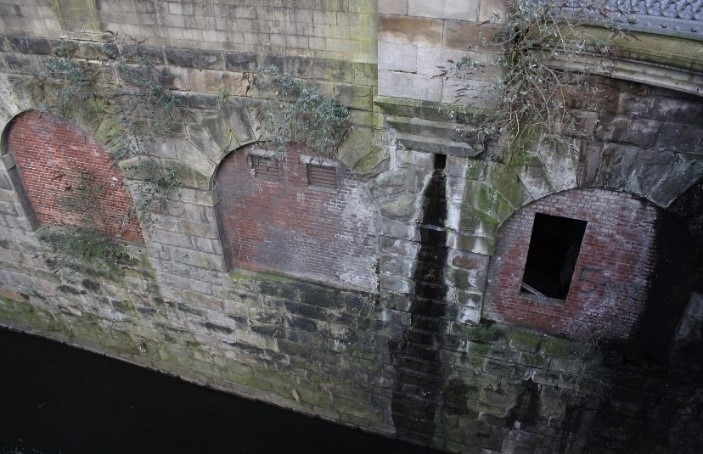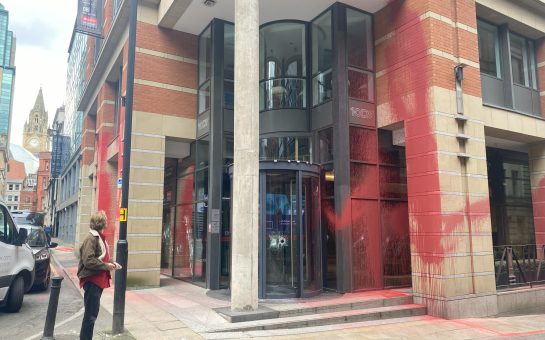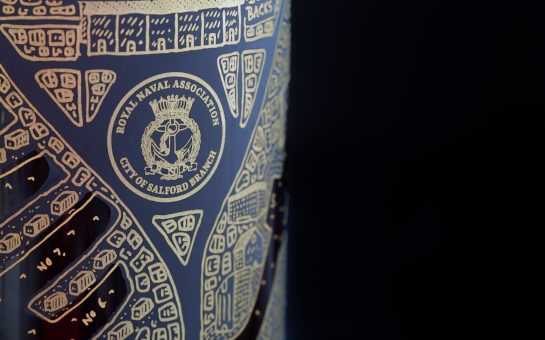“You’ve got to be strong-minded, strong-willed and have that sense to shut off in your mind because if I channelled my efforts into worrying about what’s in front of me I wouldn’t explore on; I’d run a mile.
“Some places are terrifying to be inside.”
Urban explorer Matt Holmes, 26, also known as the Derelict Explorer, describes what it takes to get through the haunted atmosphere of abandoned buildings.
He continued: “I don’t know what I’m walking into; it’s a dark, quiet atmosphere, you can hear your heartbeat and your mind runs away with itself.”

The thrill of the explore is what drives urban explorers on but not the thrill you might expect for the Derelict Explorer at least.
Matt said: “It’s not about the risk of being caught or anything like that, that doesn’t do it for me – the thrill is being able to get inside and photograph a building that is frozen in a different time.”
It is this fascination with history, which he developed from a young age at school, that led Matt to the discovery of his unconventional passion.
When visiting a friend at university in Crewe he researched things to do and came across a World War Two prisoner of war camp that held high-ranking Nazi generals, which he felt he had to investigate.
He found around 12 huts with the capacity for up to 50 prisoners each, eerily preserved since the end of the war in 1945, with the shower heads and some light fittings still intact.

He said: “The minute I walked into this place something just clicked; it was a passion I’d found that day and I just wanted to see more, I wanted to see what else was abandoned out there.”
That was three years ago in 2017 and the first of over 200 explores he would undertake in the service of uncovering and documenting forgotten pieces of history.
Manchester
In his hometown of Manchester Matt visited many sites including a Second World War air raid shelter under Victoria arches, which he would later name his favourite explore of all.
The shelter is located underground in front of Manchester Cathedral and access required the Explorer to abseil over the canal wall to a small doorway.
Inside he found signs and even a poster still intact on the walls and became engrossed in the worries of the people who were last in the shelter in a very different context.

Matt said: “Lots of things had changed above ground level but I found myself encircled in this time warp that was still in 1945.
“All these emotions and thoughts were going through my mind, I kind of felt like I was slipping back into the mindset of the people that were last in here, it was a very odd experience.”
The access point has since been boarded up and street-level grids above the shelter welded shut meaning that Matt’s photographs may be the last to ever be taken of the shelter.
See some of the Derelict Explorer’s other Manchester explores: Click the pins for the photo galleries
Primark’s hidden floors, 4-6th
- Designed by architects J.W. Beaumont & Sons and opened in 1915 as Lewis’s Department Store Ltd.
- The building was extended in 1929 onto Market Street by the same architects.
- The store closed in 2001, with Lewis’s later going defunct in 2010, and the building was purchased by Primark in 2002.
- The top three floors have remained abandoned and frozen in the 1915 aesthetic of the Lewis’s era ever since.
Manchester Piccadilly World War Two air raid shelter, 1939-1945
- Opened by L.M. & S. Railway in 1939, at the beginning of World War Two, under Piccadilly Station to offer refuge for commuters from German bomb attacks.
- The shelter could hold up to 1,275 people, making it the second largest in Manchester after the one underneath Manchester Cathedral.
- The shelter contained a warden’s post, toilets and lighting which is still present today.
- There were two entrance and exit points, of which the external emergency one is now bricked up whilst the doorway into the station remains.
- The shelter closed in 1945 following the end of the Second World War.
Mayfield train station, 1906-1986
- Opened in 1910 by the London and North Western Railway Co, adjacent to Manchester Piccadilly (then called London Road Station), which was under renovation at the time.
- During the First World War, in 1914, over 100,000 soldiers from Lancashire passed through the station on their way to battle.
- During the Second World War, on 22 December 1940 the station was hit by a German parachute mine which destroyed platforms two and three and took the station out of action for some weeks.
- The station’s timetable declined after the war, except for a temporary boost in the 1950s as services were transferred from Piccadilly Station during its electrification, until its closure in October 1960.
National and international
In true character of an inquisitive explorer Matt didn’t stop there but has explored derelict sites across the UK including the padded cells of lunatic asylums in Scotland and Wales, which proved popular with his large online following.
He also decided to take his ventures international last year with a trip to Berlin dedicated to visiting abandoned buildings of historical interest, including the German Nazi headquarters 25 miles south of Berlin.
The building itself, although somewhat crumbling in places, was almost untouched and original to the time of its abandonment, its dark history preserved and enveloped in the forest it is hidden within.

Matt said: “It was quite horrifying to walk through it because the footsteps I walked over were those of the evilest men of that time.
“It was quite emotional in that sense but when you step back and look at the building and the architecture it’s a really beautiful, stunning building and it’s just a shame that inside it has a very dark sense.”
Driving force
Matt’s mission to document abandoned and forgotten sites is spurred on by the risk of demolition, particularly in the UK with the modernisation of city landscapes threatening to wipe out the fabric of generations of history and culture.
He said: “It’s so important to photograph what’s left because I’ve seen so many buildings be demolished and it’s really quite sad to walk past and something is gone and all those memories are gone.”
On a local level, near where the Derelict Explorer grew up, Simpson’s factory in Stretford has been demolished and the grounds used to for new-build apartments.


Matt pointed out that places like the factory are the reason that local communities have grown into the hubs of today through drawing in and growing large populations for work.
He felt that piece of local history could have been preserved with a renovation project to create apartments but modern entrepreneurs evidently favour knocking down and starting from scratch.
Matt said: “It’s a shame that the investors are not looking at the historical factor and they’re only looking at profit margins.
“It hurts when I travel through Manchester, which at the minute is being completely renovated, completely wiped out, as if you’re getting a bulldozer and knocking everything down and rebuilding all these flashy apartments that all look the same.
“I just think there’s no character; every time you knock down an old building you’re knocking down a slight piece of character that that area has; it’s sad, very sad.”
For that reason the Derelict Explorer marches on and vows: “Until that fire inside, that love for history burns out, I’m going to keep exploring.”



